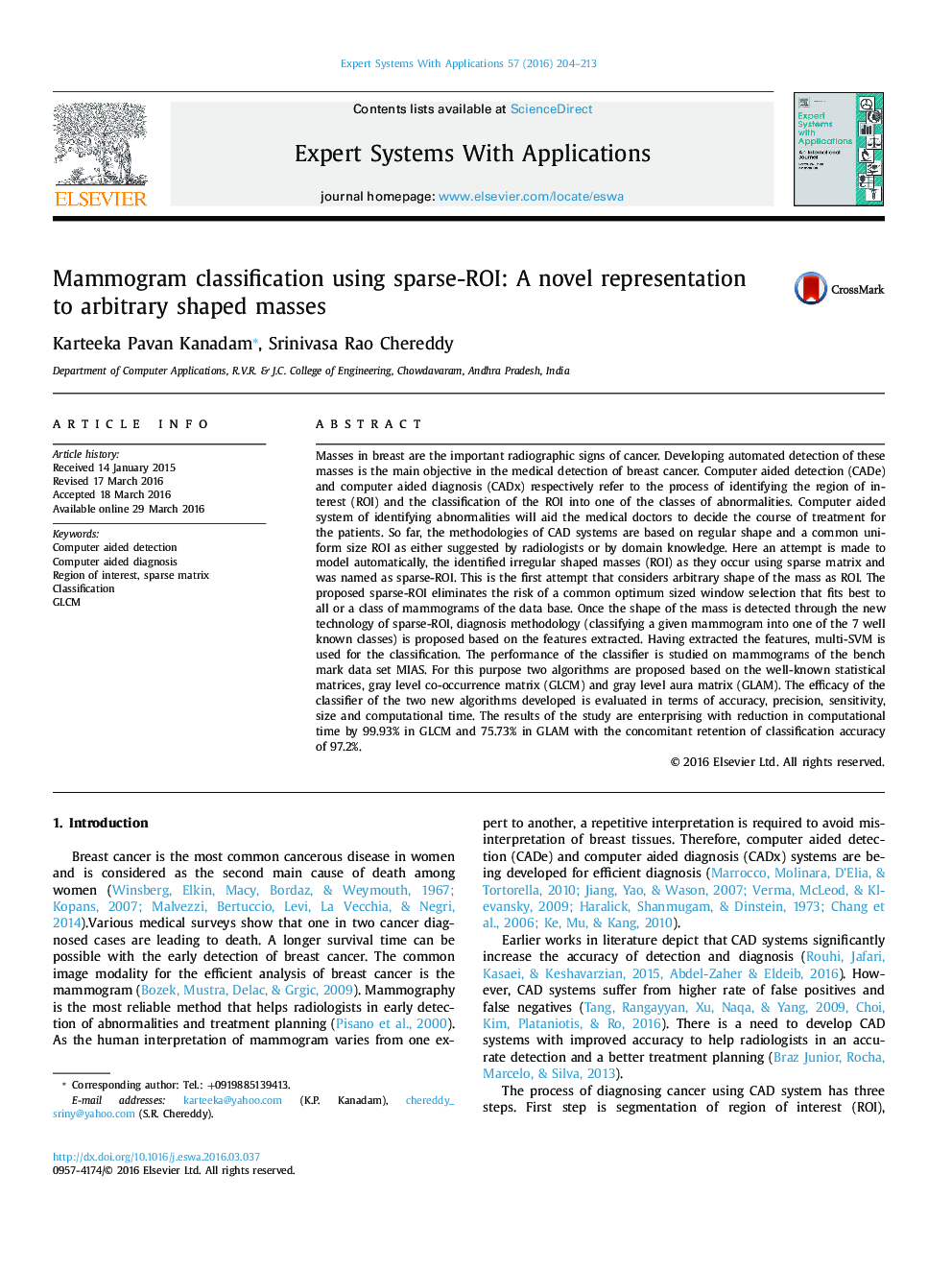| کد مقاله | کد نشریه | سال انتشار | مقاله انگلیسی | نسخه تمام متن |
|---|---|---|---|---|
| 381973 | 660712 | 2016 | 10 صفحه PDF | دانلود رایگان |
• Sparse matrix is used to represent the arbitrary shaped masses, called Sparse-ROI.
• Sparse-ROI eliminates the risk of a common optimum sized window selection.
• Two algorithms were developed to describe Sparse-ROI using GLCM and GLAM.
• A drastic reduction in computational time by 99.93% in GLCM is observed on MIAS.
• 97.2% of classification accuracy is observed.
Masses in breast are the important radiographic signs of cancer. Developing automated detection of these masses is the main objective in the medical detection of breast cancer. Computer aided detection (CADe) and computer aided diagnosis (CADx) respectively refer to the process of identifying the region of interest (ROI) and the classification of the ROI into one of the classes of abnormalities. Computer aided system of identifying abnormalities will aid the medical doctors to decide the course of treatment for the patients. So far, the methodologies of CAD systems are based on regular shape and a common uniform size ROI as either suggested by radiologists or by domain knowledge. Here an attempt is made to model automatically, the identified irregular shaped masses (ROI) as they occur using sparse matrix and was named as sparse-ROI. This is the first attempt that considers arbitrary shape of the mass as ROI. The proposed sparse-ROI eliminates the risk of a common optimum sized window selection that fits best to all or a class of mammograms of the data base. Once the shape of the mass is detected through the new technology of sparse-ROI, diagnosis methodology (classifying a given mammogram into one of the 7 well known classes) is proposed based on the features extracted. Having extracted the features, multi-SVM is used for the classification. The performance of the classifier is studied on mammograms of the bench mark data set MIAS. For this purpose two algorithms are proposed based on the well-known statistical matrices, gray level co-occurrence matrix (GLCM) and gray level aura matrix (GLAM). The efficacy of the classifier of the two new algorithms developed is evaluated in terms of accuracy, precision, sensitivity, size and computational time. The results of the study are enterprising with reduction in computational time by 99.93% in GLCM and 75.73% in GLAM with the concomitant retention of classification accuracy of 97.2%.
Journal: Expert Systems with Applications - Volume 57, 15 September 2016, Pages 204–213
